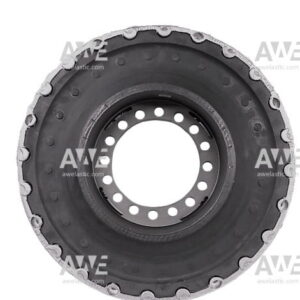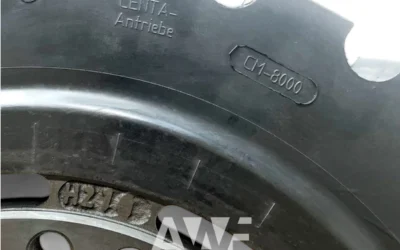Read Article
Read Article
Discussion –
Centamax Couplings: Enhancing Power Transmission and Durability in Demanding Industrial Applications
Centamax couplings are high-performance, torsionally flexible couplings designed for demanding industrial applications where reliability, durability, and efficient power transmission are critical. These couplings are commonly employed in industries such as marine, power generation, rail, and heavy machinery, where high torque transmission, shock absorption, and misalignment compensation are essential for maintaining operational efficiency and equipment longevity.
Centamax couplings are known for their robust design and ability to accommodate various forms of misalignment—angular, axial, and radial—without transferring excessive stress to connected components. This feature is especially valuable in environments where vibrations, thermal expansion, and mechanical wear can cause misalignment over time. The couplings use a combination of flexible elastomers and rigid steel components to achieve this, ensuring smooth power transmission while dampening torsional vibrations and shocks. This contributes to minimizing wear and tear on machinery, reducing the frequency of maintenance, and extending the life of equipment.
In the marine industry, Centamax couplings are utilized in ship propulsion systems to connect engines with gearboxes and propellers. These couplings are designed to handle the immense torque produced by large marine engines, while also mitigating vibrations that could cause discomfort for passengers and crew or damage sensitive equipment. The couplings’ ability to compensate for slight misalignments between engine and drivetrain components is crucial in shipbuilding, where perfect alignment is challenging to maintain due to structural movement and vibrations during operation.
In power generation, particularly in genset applications, Centamax couplings serve as critical components that connect engines to generators. The coupling’s ability to absorb shocks and dampen torsional vibrations is important for protecting both the engine and generator from mechanical stress during sudden load changes. Additionally, their high torque capacity makes them suitable for use in gas and diesel generators, which operate under fluctuating load conditions.
The rail industry also benefits from Centamax couplings, where they are used in locomotives to connect the engine with the drivetrain. The ability to reduce torsional vibrations helps protect sensitive electronic components, while the coupling’s flexibility reduces the risk of component failure due to misalignment. Rail applications often operate in harsh environments, subjecting equipment to temperature fluctuations, vibration, and mechanical wear. Centamax couplings are designed to endure these conditions while providing reliable performance over extended periods.
Centamax couplings also find applications in the mining and heavy machinery industries, where equipment is subjected to extreme forces and harsh working environments. Large-scale machinery such as crushers, conveyors, and excavators require couplings that can handle high torque and provide reliable power transmission, even under misaligned conditions. The shock-absorbing properties of Centamax couplings ensure that equipment components are protected from the constant stresses of heavy-duty operations.
In all these industries, Centamax couplings contribute to improved operational efficiency, reduced maintenance downtime, and extended equipment lifecycles. Their torsionally flexible design allows them to adapt to the unique demands of various sectors, making them a versatile and essential component in modern industrial applications.
Centamax Couplings
You May Also Like
Understanding CENTAMAX Coupling Types – SB, SBE, SC, and SCE
Read ArticleRead ArticleDiscussion - CENTAMAX couplings are manufactured in several fitment types to suit different...
Why OEM Centamax Couplings Outperform Copies in Large Gensets
Read ArticleRead ArticleDiscussion - In high-output marine generators, gas power units, locomotives, and heavy...
Common Failure Causes in BoWex® FLE-PA Couplings – What to Watch For and How to Avoid Downtime
Read ArticleRead ArticleDiscussion - When your engine-to-pump connection fails, the coupling is often the first...




















